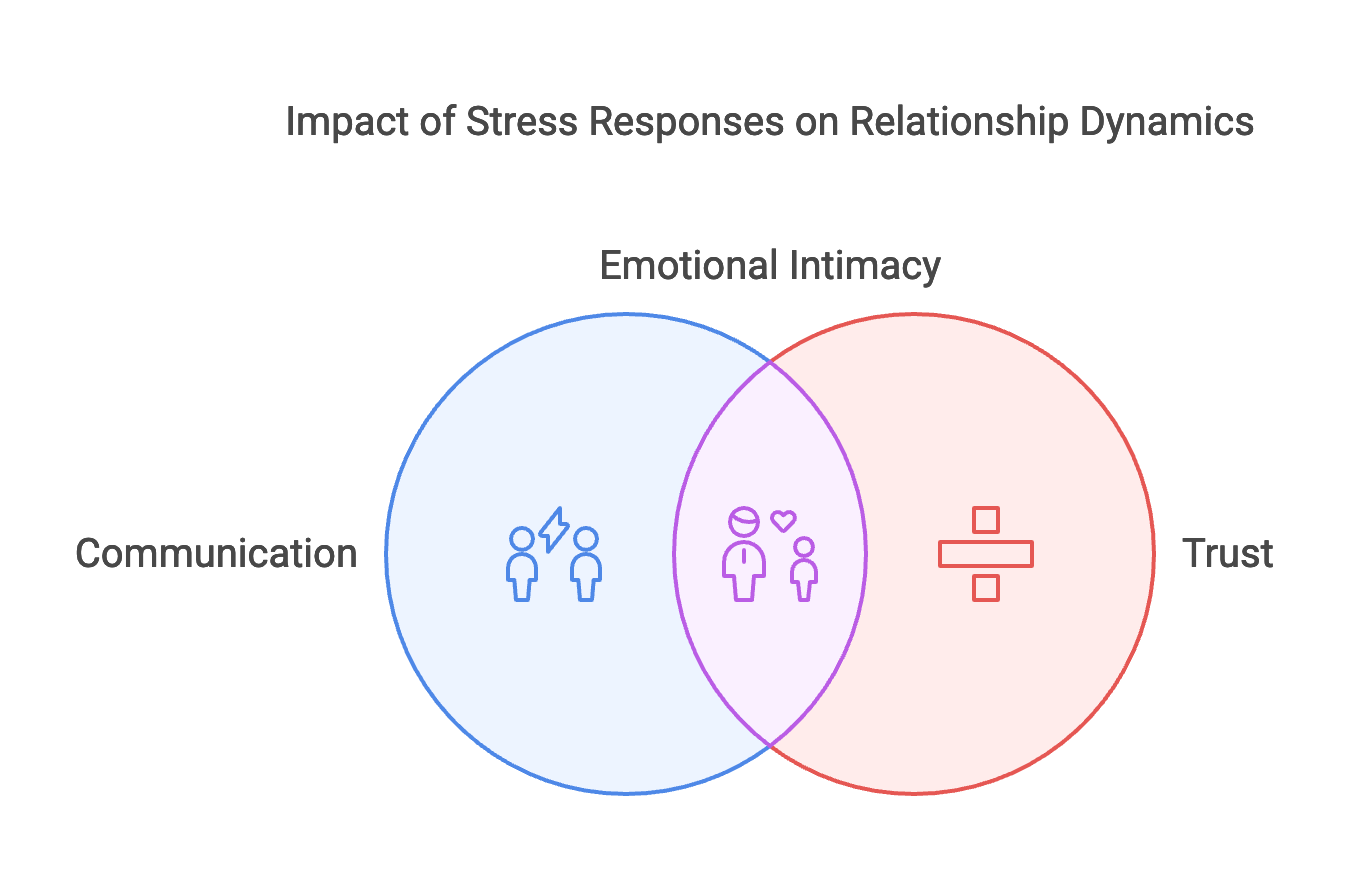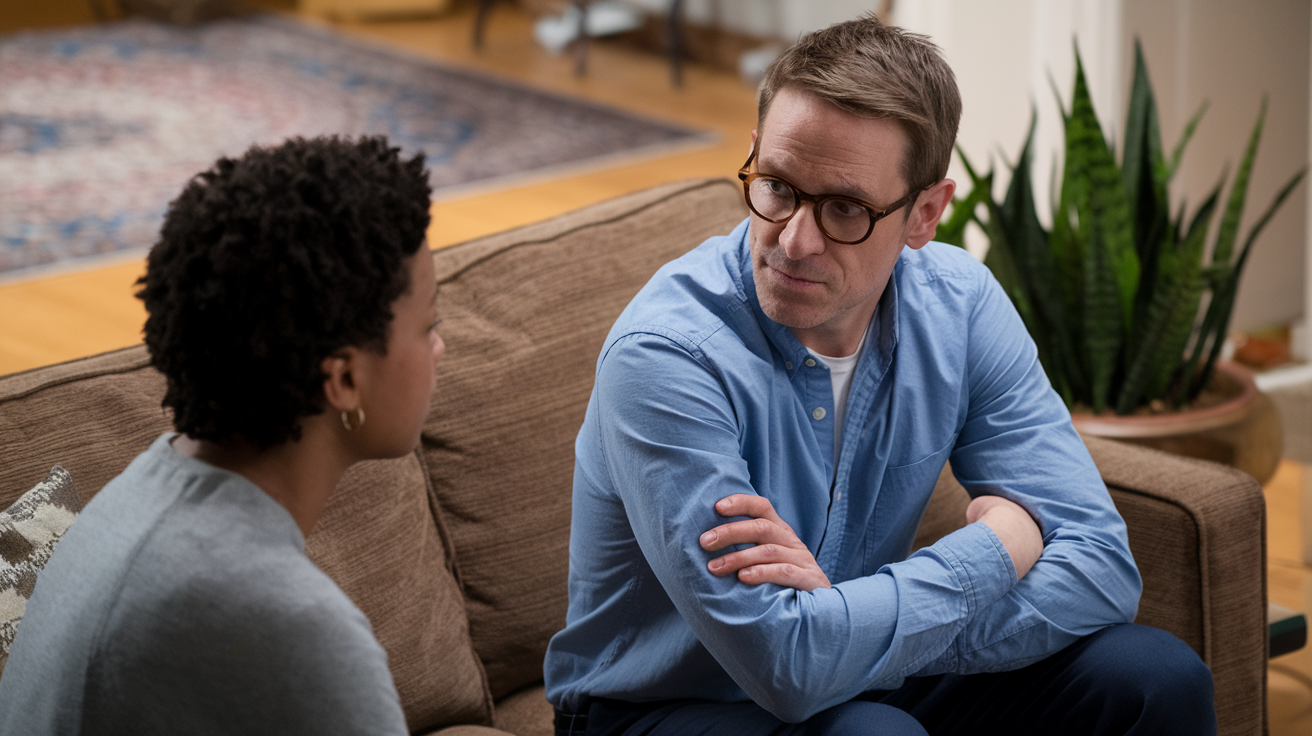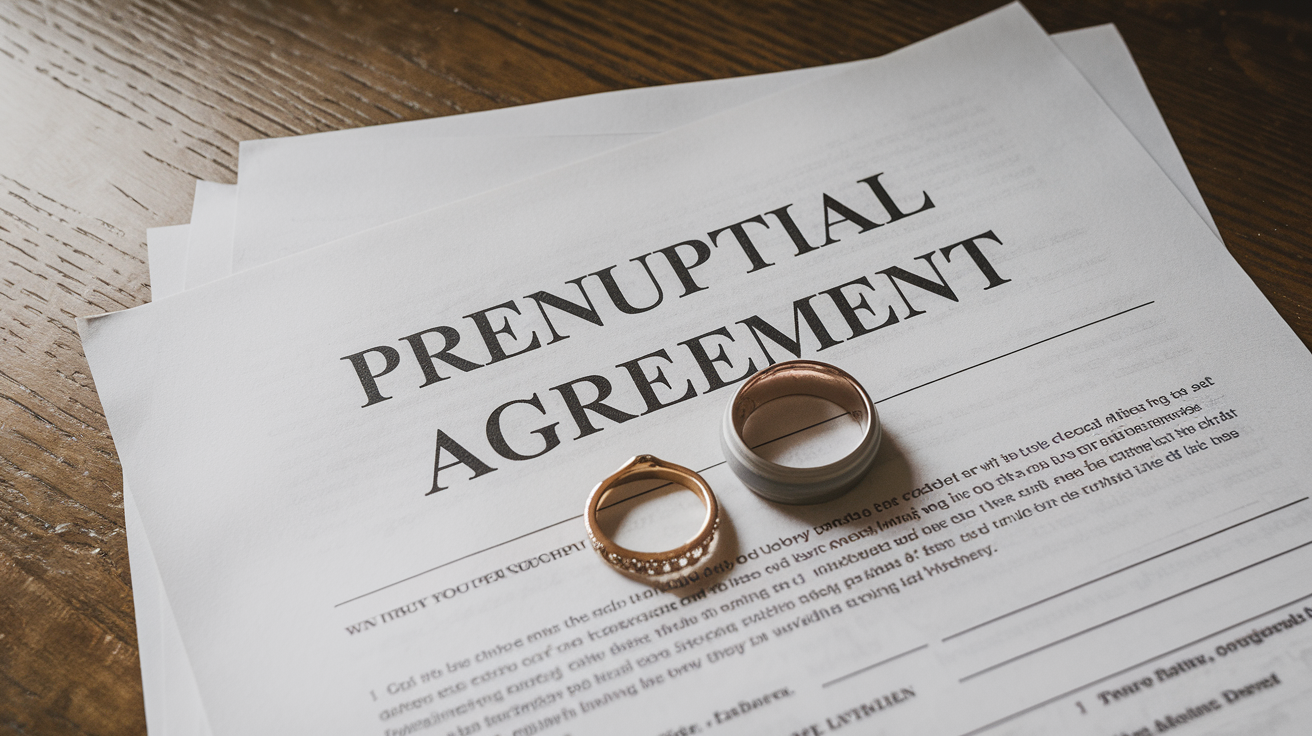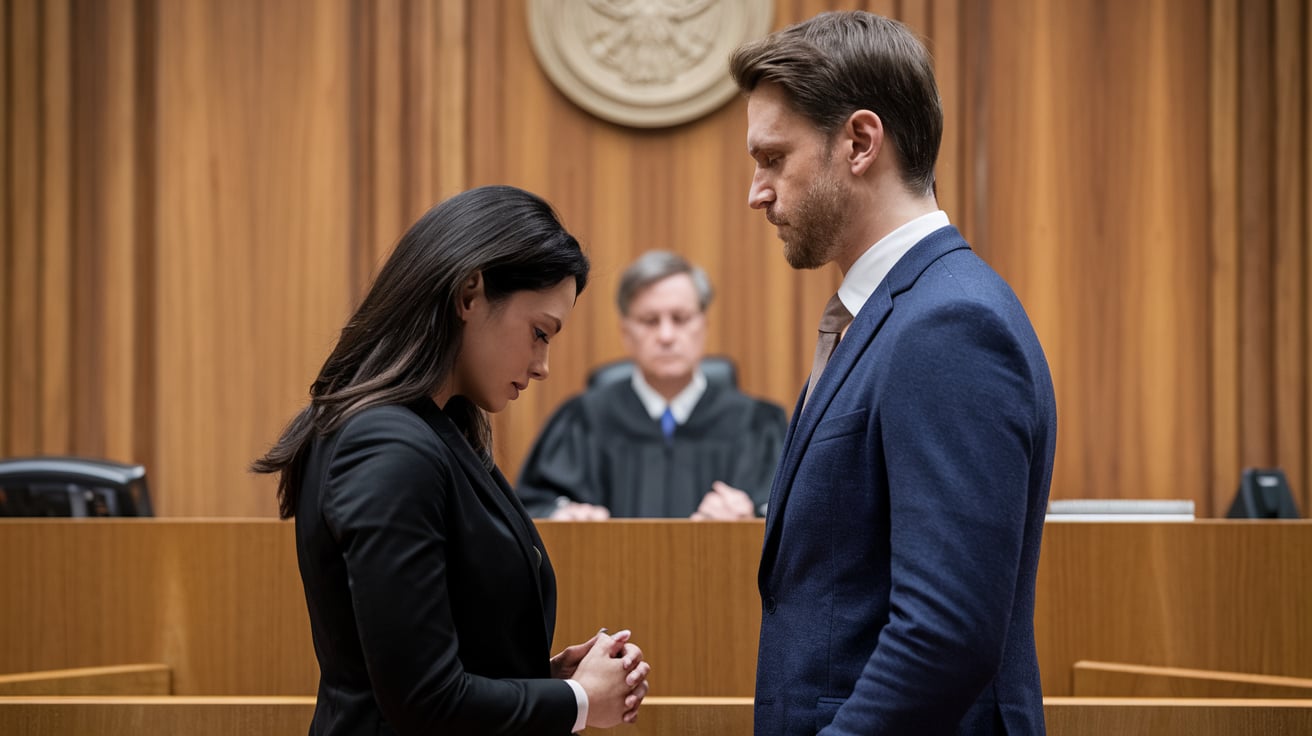Do you feel stuck in a relationship where one person needs space while the other seeks closeness?
This push-pull pattern often shows up in anxious-avoidant relationships, making both partners feel misunderstood and alone.
But, the positive aspect is that breaking this pattern and building a healthier connection with your partner is possible.
Let’s explore some practical ways to understand such attachment patterns and effective communication and create a balanced relationship that works for both partners.
We’ll look at strategies that have helped other couples move from confusion to connection.
Understanding Anxious-Avoidant Relationships

When two people with different attachment needs come together, their relationship often follows a specific pattern.
- The anxious partner seeks frequent reassurance and connection, showing strong emotional responses when their needs aren’t met.
- Meanwhile, the avoidant partner tends to step back when emotions run high, needing personal space to feel comfortable.
Think of it like a dance – as one person moves closer, the other moves away.
This behavior creates a cycle: the more one partner pursues closeness, the more the other withdraws.

- Communication becomes strained because each person responds differently to stress
- Trust gets shaky when partners misread each other’s actions
- Emotional intimacy stays limited as both partners protect themselves
Major Signs You’re in an Anxious-Avoidant Relationship
| Category | Signs |
|---|---|
| Anxious Partner | • Constantly checking the phone for messages from their partner • Feeling very worried when their partner doesn’t respond quickly • Taking small actions or comments too personally • Needing lots of confirmation about the relationship • Putting their partner’s needs before their own regularly • Finding it hard to focus on other activities when there’s tension |
| Avoidant Partner | • Wanting extra space after spending time together • Finding reasons to keep emotional conversations short • Seeing normal requests for closeness as too demanding • Having trouble expressing feelings openly • Keeping parts of their life separate from the relationship • Feeling overwhelmed by their partner’s emotional needs |
| Relationship Dynamic | • Frequent arguments that never reach a resolution • One partner always apologizing first • Difficulty planning for the future together • Mixed signals about commitment • Good moments followed by sudden distance • Strong attraction but constant conflict |
How to Deal with an Anxious Avoidant Partner

1. Learn to Read Their Need for Space
When your partner steps back, it doesn’t mean they want to end the relationship. Their need for distance comes from deep-rooted patterns of managing stress and emotions.
Instead of taking their withdrawal personally, try seeing it as their way of processing feelings. Give them time to reset, but set gentle boundaries about staying connected.
A simple text saying, “Take the time you need – let’s chat when you’re ready,” shows understanding while keeping communication open.
2. Create Clear Communication Rules
Setting basic guidelines for communication helps both partners feel secure. Talk with your partner about expectations for responding to messages, sharing daily updates, and handling disagreements.
For example, agree on a reasonable response time for messages that works for both of you.
Make plans for how to express needs without making demands. These rules create structure without feeling restrictive.
3. Focus on Small Steps
Trust happens gradually through consistent, small actions rather than big gestures. Start with minor changes that feel manageable for both partners.
Share one meaningful thing from your day, practice active listening for five minutes, or plan short activities together.
These small steps build a foundation of trust and show both partners that change is possible without pushing too hard or too fast.
4. Maintain Your Own Life and Interests
Strong relationships need space for individual growth. Keep up with your hobbies, friends, and personal goals while being in the relationship.
This independence helps reduce pressure on your partner and builds your own confidence.
Spend time on activities that make you feel good, and share these experiences with your partner when they’re open to it.
5. Practice Patience
With progress, changing attachment patterns takes time and consistent effort. Some days will show progress, while others might feel like steps backward.
Remember that healing happens at different speeds for different people.
Keep acknowledging small improvements, be kind to yourself during setbacks, and celebrate when you both manage difficult situations better than before.
6. Seek Professional Support
When needed, working with a relationship counselor can provide tools and strategies specific to your situation.
They can help both partners understand their patterns, improve communication, and develop healthier ways of connecting.
Professional guidance offers a safe space to explore feelings and learn new relationship skills together.
How to Fix Anxious-Avoidant Relationships

Fixing an anxious-avoidant relationship requires both partners to recognize their attachment styles and work together to bridge the emotional gap.
1. Build Self-Awareness
First, understanding personal patterns forms the basis for lasting change in relationships. Take time to notice your reactions in different situations – what makes you pull away or hold on tighter?
Write down your feelings and responses during tough moments. Pay attention to how past experiences might affect your current behavior.
This self-reflection helps both partners recognize their role in the relationship pattern and opens the door for meaningful changes.
2. Practice Open Communication
Start small conversations about feelings and needs without blame or judgment. Use specific examples to explain your perspective, like “When messages go unanswered, my mind starts worrying” instead of “You never respond.”
Make room for both partners to share their truth without interruption. Set aside regular time for these talks, perhaps starting with just 15 minutes twice a week.
Remember that good communication builds up gradually through consistent practice.
3. Set Healthy Boundaries
Work as a team to create guidelines that respect both partners’ needs. Talk about personal space, alone time, and ways to stay connected that feel good for both people.
Write down agreed-upon boundaries and review them regularly. For example, decide how to handle situations when one person needs space while the other needs connection.
These boundaries help both partners feel safe and respected in the relationship.
4. Learn New Ways to Show Support
Find methods of showing care that work for both partners’ comfort levels. Maybe one partner prefers physical closeness while the other likes verbal support.
Create a list of ways to show affection that feel natural to each person. Practice using these new support methods regularly, even in small moments.
This helps build a stronger connection while respecting each person’s attachment style.
5. Build Trust Through Consistent Actions
Focus on being reliable in small, everyday moments. Follow through on what you say you’ll do, from sending a morning message to keeping plans for date night.
Start with manageable commitments and gradually build up. Keep track of progress and celebrate small wins together.
Remember that trust grows through many small positive interactions over time.
6. Work on Individual Growth
Each partner should focus on personal development alongside relationship work. Take classes, read books, or try new hobbies that boost confidence and self-worth.
Share these experiences with each other when comfortable.
This individual growth helps reduce dependency and creates a healthier relationship dynamic where both partners choose to stay rather than need to stay.
Conclusion
Last but not least, moving from an anxious-avoidant pattern to a secure relationship takes patience and dedication from both partners.
The cycle can change when you understand each other’s needs and work together to create new connection patterns.
Remember, every couple moves at their own pace toward healing. Your efforts to understand and support each other build a stronger foundation day by day.
So, take small steps and make a big difference over time.
Frequently Asked Questions
Why are Avoidants Attracted to Anxious?
Avoidant people often connect with anxious partners because the intense emotions and pursuit confirm their belief that relationships are overwhelming, making their need to withdraw feel justified.
What is the Hardest Attachment Style to Date?
Avoidant attachment tends to be the most challenging to date because these partners struggle with emotional closeness and often pull away when relationships deepen.
What is the Unhealthiest Attachment Style?
Disorganized attachment is typically considered the most challenging pattern, as it combines both anxious and avoidant behaviors, making relationships very unpredictable for all involved.








